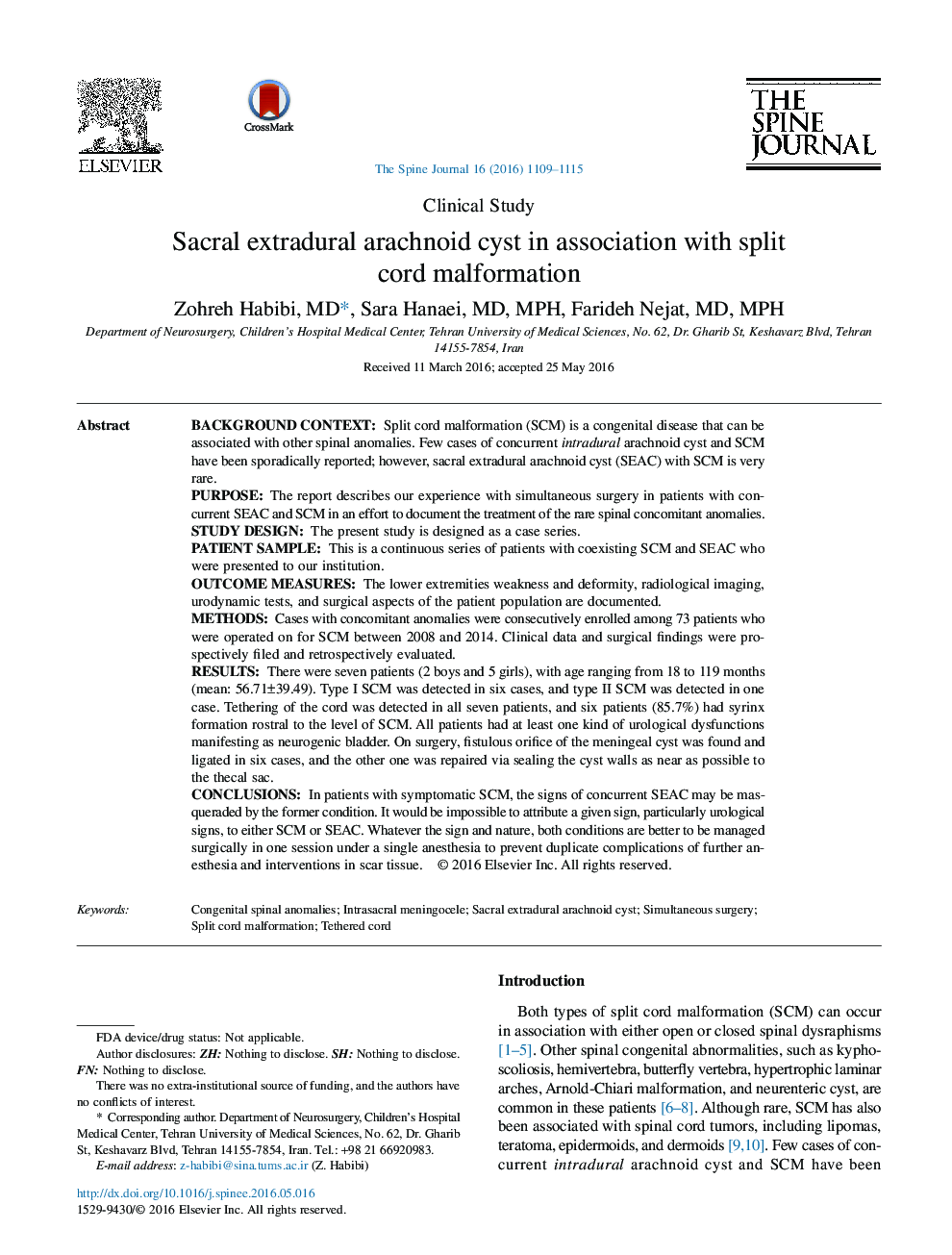| کد مقاله | کد نشریه | سال انتشار | مقاله انگلیسی | نسخه تمام متن |
|---|---|---|---|---|
| 4095731 | 1410993 | 2016 | 7 صفحه PDF | دانلود رایگان |

Background ContextSplit cord malformation (SCM) is a congenital disease that can be associated with other spinal anomalies. Few cases of concurrent intradural arachnoid cyst and SCM have been sporadically reported; however, sacral extradural arachnoid cyst (SEAC) with SCM is very rare.PurposeThe report describes our experience with simultaneous surgery in patients with concurrent SEAC and SCM in an effort to document the treatment of the rare spinal concomitant anomalies.Study DesignThe present study is designed as a case series.Patient SampleThis is a continuous series of patients with coexisting SCM and SEAC who were presented to our institution.Outcome MeasuresThe lower extremities weakness and deformity, radiological imaging, urodynamic tests, and surgical aspects of the patient population are documented.MethodsCases with concomitant anomalies were consecutively enrolled among 73 patients who were operated on for SCM between 2008 and 2014. Clinical data and surgical findings were prospectively filed and retrospectively evaluated.ResultsThere were seven patients (2 boys and 5 girls), with age ranging from 18 to 119 months (mean: 56.71±39.49). Type I SCM was detected in six cases, and type II SCM was detected in one case. Tethering of the cord was detected in all seven patients, and six patients (85.7%) had syrinx formation rostral to the level of SCM. All patients had at least one kind of urological dysfunctions manifesting as neurogenic bladder. On surgery, fistulous orifice of the meningeal cyst was found and ligated in six cases, and the other one was repaired via sealing the cyst walls as near as possible to the thecal sac.ConclusionsIn patients with symptomatic SCM, the signs of concurrent SEAC may be masqueraded by the former condition. It would be impossible to attribute a given sign, particularly urological signs, to either SCM or SEAC. Whatever the sign and nature, both conditions are better to be managed surgically in one session under a single anesthesia to prevent duplicate complications of further anesthesia and interventions in scar tissue.
Journal: The Spine Journal - Volume 16, Issue 9, September 2016, Pages 1109–1115